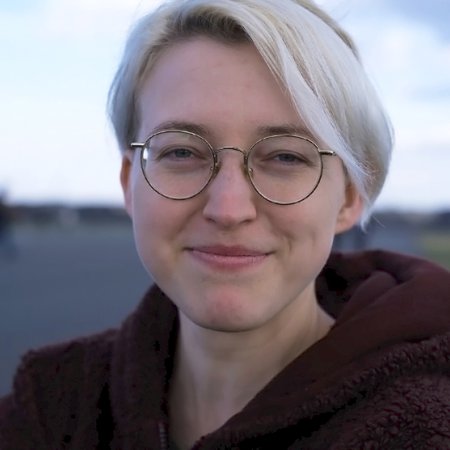Publication Award for Meetu Verma
Meetu Verma is honored with the Publication Award for young scientists awarded on 10 May 2012 by the 16th Leibniz Kolleg Potsdam. She earned it for three publications about velocity fields on the surface of the sun, which were published in the referred journals Astronomy & Astrophysics and Astronomical Notes.
In her thesis Meetu Verma explores the "Developement and Erosion of Sunspots“ working in the research section "Physics of the Sun“ at Leibniz Institute for Astrophysics Potsdam (AIP).
To study the decay of sunspots Meetu Verma analyzed time-series of solar images obtained with the Solar Optical Telescope onboard the Japanese space mission "Hinode". As a part of her doctoral work she created a database of velocity fields on the surface of the Sun, which contains hundreds of datasets allowing scientists to study a variety of new phenomena on the Sun.
In a case study Meetu Verma followed the evolution of sunspots, which decayed over the course of a week. One sunspot was surrounded by strong outward motions with a speed of up to 1 km per second appropriately named moat flow. Meetu Verma demonstrated that small concentrations of the magnetic fields do not move randomly, but follow specific paths and contribute to the slow erosion of the sunspot. "The interaction of strong magnetic fields with hot solar plasma," says Meetu Verma, "was previously known only in general terms. The new telescopes on Earth and in space, now allow us to investigate these processes in detail."
In another study, she investigated if photospheric flow fields can trigger solar eruptions. "Shear flows between sunspots of different magnetic polarity tend to increase the energy stored in the magnetic fields, but they are not directly responsible for triggering flares," explains Meetu Verma. Within a few seconds solar eruptions can releases tremendous amounts of energy. These solar outbursts can affect technological assets in space and even influence technical systems on Earth. These effects are also called "space weather".
Meetu Verma holds a scholarship of the German Academic Exchange Service (Deutscher Akademischer Austauschdienst (DAAD)) and is currently working on her thesis at the University of Potsdam and the Leibniz Institute for Astrophysics Potsdam (AIP). The award is shared with Dr. Damaris Zurell, who works at the Institute of Biochemistry and Biology at the University of Potsdam.
Further information
Scientific Publications
Verma, M., Denker, C. 2011: Horizontal Flow Fields Observed in Hinode G-Band Images. I. Methods. Astronomy and Astrophysics 529, A153.
Verma, M., Balthasar, H., Deng, N., Liu, C., Shimizu, T., Wang, H., Denker, C. 2012: Horizontal Flow Fields Observed in Hinode G-band Images. II. Flow Fields in the Final Stages of Sunspot Decay. Astronomy and Astrophysics 538, A109.
Beauregard, L., Verma, M., Denker, C. 2012: Horizontal Flows Concurrent with an X2.2 Flare in Active Region NOAA 11158. Astronomische Nachrichten 333, 125.
Images
Meetu Verma in the Leibniz Institute for Astrophysics Potsdam (AIP).
Big screen size [1000 x 666, 110 KB]
Original size [3504 x 2336, 1.1 MB]




